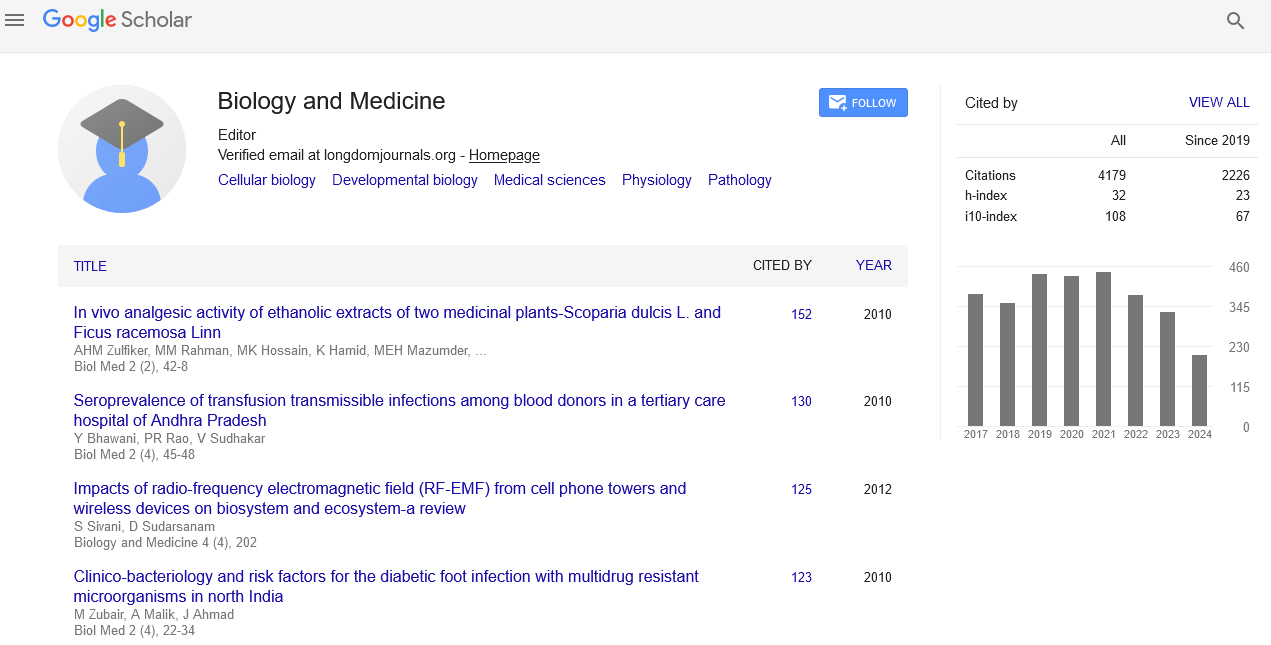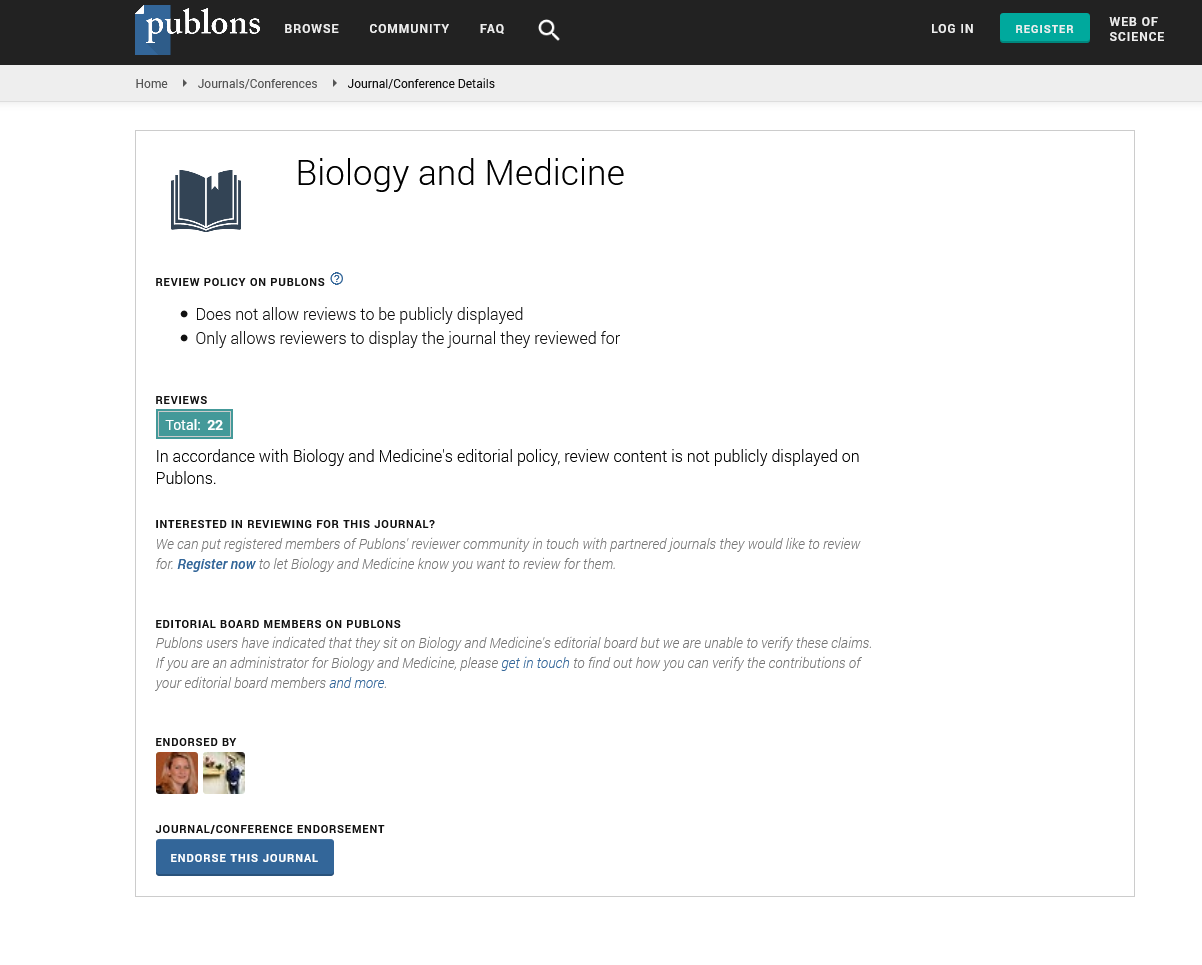Indexed In
- Open J Gate
- Genamics JournalSeek
- CiteFactor
- Cosmos IF
- Scimago
- Ulrich's Periodicals Directory
- Electronic Journals Library
- RefSeek
- Hamdard University
- EBSCO A-Z
- Directory of Abstract Indexing for Journals
- OCLC- WorldCat
- Proquest Summons
- Scholarsteer
- ROAD
- Virtual Library of Biology (vifabio)
- Publons
- Geneva Foundation for Medical Education and Research
- Google Scholar
Useful Links
Share This Page
Journal Flyer

Open Access Journals
- Agri and Aquaculture
- Biochemistry
- Bioinformatics & Systems Biology
- Business & Management
- Chemistry
- Clinical Sciences
- Engineering
- Food & Nutrition
- General Science
- Genetics & Molecular Biology
- Immunology & Microbiology
- Medical Sciences
- Neuroscience & Psychology
- Nursing & Health Care
- Pharmaceutical Sciences
Commentary - (2023) Volume 15, Issue 12
Role of Nanotechnology in Enhancing Vaccine Efficacy and Innovative Therapeutic Strategies
Jesse Kresak*Received: 22-Nov-2023, Manuscript No. BLM-23-24526; Editor assigned: 24-Nov-2023, Pre QC No. BLM-23-24526(PQ); Reviewed: 08-Dec-2023, QC No. BLM-23-24526; Revised: 15-Dec-2023, Manuscript No. BLM-23-24526(R); Published: 22-Dec-2023, DOI: 10.35248/0974-8369.23.15.634
Description
Nanotechnology, with its ability to produce materials at the nanoscale, has emerged as an emerging field with transformative potential across various disciplines. In immunology, nanotechnology is revolutionizing the landscape of vaccine delivery and therapeutic interventions. Nanoparticles, ranging from liposomes to polymeric nanoparticles, offer a unique advantage in delivering antigens with precision. Their size and surface properties can be tailored to optimize interaction with the immune system. Nanocarriers facilitate improved antigen presentation, enhancing the recognition of antigens by immune cells. This is particularly crucial for antigens with low immunogenicity, providing a solution to challenges in vaccine development.
Nanoparticles can be engineered to carry adjuvants, substances that enhance the immune response. This synergy between antigens and adjuvants within nanostructures amplifies the efficacy of vaccines, leading to stronger and more durable immune responses. Nanotechnology enables active targeting by functionalizing nanoparticles with ligands that specifically recognize immune cells. This ensures precise delivery of vaccines to target cells, maximizing the immune response while minimizing off-target effects. Nanoparticles are well-suited for mucosal immunization, where traditional vaccines face challenges. They can overcome mucosal barriers, promoting immune responses at mucosal surfaces, such as the respiratory and gastrointestinal tracts. Nanoparticles open avenues for vaccine delivery to the brain by overcoming the blood-brain barrier. This is particularly significant in the context of neuroinflammatory diseases and infections affecting the central nervous system.
Nanoparticles loaded with immunosuppressive agents can be targeted to specific immune cells, offering a localized and controlled approach to treat autoimmune diseases without widespread immunosuppression. Nanotechnology plays a pivotal role in cancer immunotherapy by delivering antigens and immune modulators directly to tumor cells. This approach enhances the activation of the immune system against cancer, promoting targeted therapeutic outcomes. Nanotechnology facilitates the development of personalized vaccines by enabling the incorporation of patient-specific antigens. This individualized approach holds promise for treating various diseases, including cancer and infectious diseases.
The biocompatibility of nanoparticles is a critical consideration. Ensuring that nanocarriers are safe for use in the human body requires rigorous testing to assess potential toxicity and long-term effects. As nanotechnology-based immunotherapies progress, addressing challenges in large-scale manufacturing and scalability becomes essential to meet the global demand for vaccines and therapeutic interventions. Advancements in smart nanomaterials capable of responding to specific signals or environmental cues hold the potential to create dynamic and responsive immunotherapies with enhanced efficacy. Nanotechnology plays a pivotal role in regenerative medicine by contributing to the design of nanomaterials that promote tissue regeneration. Nanoparticles can be engineered to deliver growth factors and support the controlled release of therapeutic agents, fostering tissue repair and regeneration. Nanotechnology has also revolutionized diagnostic strategies through the development of nanoscale sensors. These sensors can detect biomarkers associated with various diseases at an early stage, allowing for prompt intervention. The integration of nanosensors with imaging technologies enhances diagnostic accuracy and facilitates real-time monitoring of therapeutic responses.
The future may witness the integration of nanotechnology with other therapeutic modalities, such as gene therapy and cell-based therapies, to create powerful combination treatments with synergistic effects. As research continues to unravel the complexities of immune responses at the nanoscale, the prospects for developing safer, more effective and personalized immunotherapies hold great promise for the future of healthcare.
Citation: Kresak J (2023) Role of Nanotechnology in Enhancing Vaccine Efficacy and Innovative Therapeutic Strategies. Bio Med. 15:634.
Copyright: © 2023 Kresak J. This is an open-accessarticle distributed under the terms of the Creative Commons Attribution License, which permits unrestricted use, distribution, and reproduction in any medium, provided the original author and source are credited.


